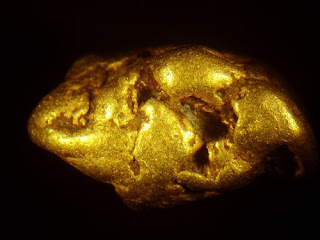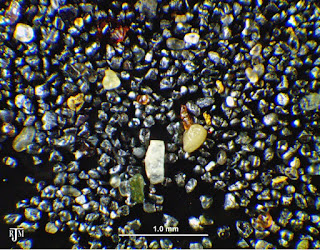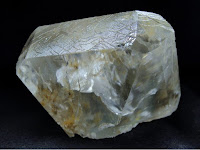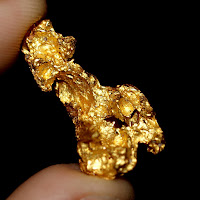How and where to find gold in New Zealand
Gold i Aotearoa
Me pehea, me hea hoki ka kitea he koura i Niu Tireni
Credit for finding gold in New Zealand must be given to the Maoris (New Zealand settlers prior to the Europeans). However, the soft yellow metal was of little value in their culture and was by in-large ignored. They treasured the Pounamu (a Green Stone also called New Zealand greenstone), a Jade occurring as river rocks, for its beautiful deep green colour and its hardness perfect for forming into adzes and clubs.
New Zealand have a 451 valid minerals, 13 (TL) - type locality of valid minerals, but today let's talk about the gold.
Here at oficina70.com we are going to help you and indicate some places where you can have happiness and pleasure in maybe finding your first nugget.
Where to panning gold in New Zealand
In New Zealand there are plenty of sites in both the north and south islands that offer fertile ground for the recreational gold prospector. The west coast of the South Island, though, provides the most consistent rewards. Historically, the area between Queenstown and Dunedin has seen the richest strikes, the Shotover River was once called “the richest river in the world”.
Wherever you choose to pan, look for features that might indicate gold-bearing material. Gravel banks on the inside bend of a river or on the downstream side of a bluff or rock outcrop are prime targets as they tend to trap gold dust as it is transported by the river.
Fossicking Areas and Permits
 |
| Image by New Zealand Geographic |
Generally, a mining permit from Crown Minerals, Ministry of Economic Development is required for panning or gold mining. However, certain areas in the South Island have been designated as “gold fossicking” areas where you can engage in recreational gold mining without a permit. A list of these areas can be found at: http://www.crownminerals.govt.nz/cms/minerals/gold-fossicking
Some places where you can find gold and types of gold varieties:
Gold Nuggets
Arrow River, Queenstown-Lakes District, Otago Region, South Island
 |
| Flattened gold nugget 9mm across. Steve Sorrell specimen. |
Nevis Valley, Central Otago District, Otago Region, South Island
 |
| Alluvial nugget 12mm across. Steve Sorrell specimen. |
Shotover River, Queenstown-Lakes District, Otago Region, South Island
 |
| Alluvial nugget 12mm across. Steve Sorrell specimen. |
 |
| Flattened alluvial nugget 18mm across. Steve Sorrell specimen. |
 |
| Flattened nugget 0.65 grams by TB Collection. |
Gold in Quartz
Gold in Quartz. Specimen is from the collection of the British Museum of Natural History #84880 (1975). Scale at bottom of image is an inch with a rule at one cm.
Blackwater Mine, Reefton, Buller District, West Coast Region, South Island
 |
| Tiny specks of gold in quartz. |
Reefton, Buller District, West Coast Region, South Island
 |
| Gold in quartz reportedly from Reefton, New Zealand purchased in gold store in Hokitika. Photographed by Peter Tucek, collection of SLOMIN, Ltd. |
 |
| Gold in quartz. Former Ewald Muller collection. Rolf Luetcke specimen and photo. |
Gold, Garnet Group, Zircon
Orepuki, Southland District, Southland Region, South Island
 |
| Collection and photograph of Rod Martin. |
Heavy mineral to separates from panning.
Gold, Quartz, Stibnite
Fiery Cross Mine, Reefton, Buller District, West Coast Region, South Island
 |
| Collection and photograph of Rod Martin. |
Sponge gold on quartz fragments. Visible gold associated with massive stibnite in this deposit is usually found on the margins of the massive stibnite.
 |
| Collection and photograph of Rod Martin. |
Crystalline gold in fracture in quartz. Visible gold associated with massive stibnite in this deposit is usually found on the margins of the massive stibnite.
Gold, Clinochlore
Blackwater Mine, Reefton, Buller District, West Coast Region, South Island
 |
| Collection and photograph of Rod Martin. |
Gold and chlorite in a fracture in solid quartz.
Other places to mine gold:
Significant amounts of primary (alluvial or placer) gold are still discovered at Coromandel in Hauraki Goldfield.
Other ancient places from placer gold at locations like Collingwood on South Island, in Otago at Gabriel's Gully, and at numerous spots along the western coastline of South Island.
Prospecting and Gold License in New Zealand
If you live in New Zealand or are planning to visit and you want to test your gold prospecting and mining skills, here are some suggestions for you:
There are numerous sites and localized gold-bearing areas on both North Island and South Island. New Zealanders are, by and large, open and friendly people so try asking the locals where you might wet your gold pan.
Just about any creek or drainage along the west coast of South Island will produce good color in your pan if you follow the principles of good sampling and exercise your knowledge of stream hydraulics and gold deposition patterns.
One of the most significant gold-producing areas in New Zealand can be found between Queenstown and Dunedin.
The Shotover River (also in the Queenstown-to-Dunedin area) was once called the "richest river in the world" because of the amount of placer gold recovered from it. Even though the Shotover has been worked over fairly hard, good placer gold values can be found there by small-scale or recreational miners who know their stuff.
Just about any creek or small stream in the Queenstown-to-Dunedin area will produce color as well. Your best bet here is, once again, to talk to the locals. They'll point you in the right direction.
If you do decide to try your hand at gold mining or panning in New Zealand, be advised that you must first purchase a type of permit or license known locally as a "Prospector's Right."
 |
| Sub aquatic gold dredge panning |
 |
| Gold dredging in Moke Creek |
The "Prospector's Right" costs around $10 (New Zealand dollars) and is valid for for a full year. You can purchase one from a Mines Division Office or from one of the larger post offices around.
Good Luck!
Now you already know the basics and any some places of amateur gold prospecting. Some time spent in local libraries or on gold mining websites as oficina70.com will help you pick a gold places that might yield riches. After that, it’s a matter of getting out and panning along your chosen river or creek until you discover that the gold who was waiting for you.
Even if you don’t find a fortune, it’s still a rewarding experience. You spend the day enjoying the outdoors, and finding even a little gold in the bottom of your pan is great feeling.
But even if you don’t find a fortune, it’s still a rewarding experience. You spend the day enjoying the outdoors, and finding even a little gold in the bottom of your pan is great feeling.
Note:
If any of my New Zealand mining friends would like to provide more detailed information on places from gold and gold mining in New Zealand, please, leave your comment below.
Images by
Source:


























